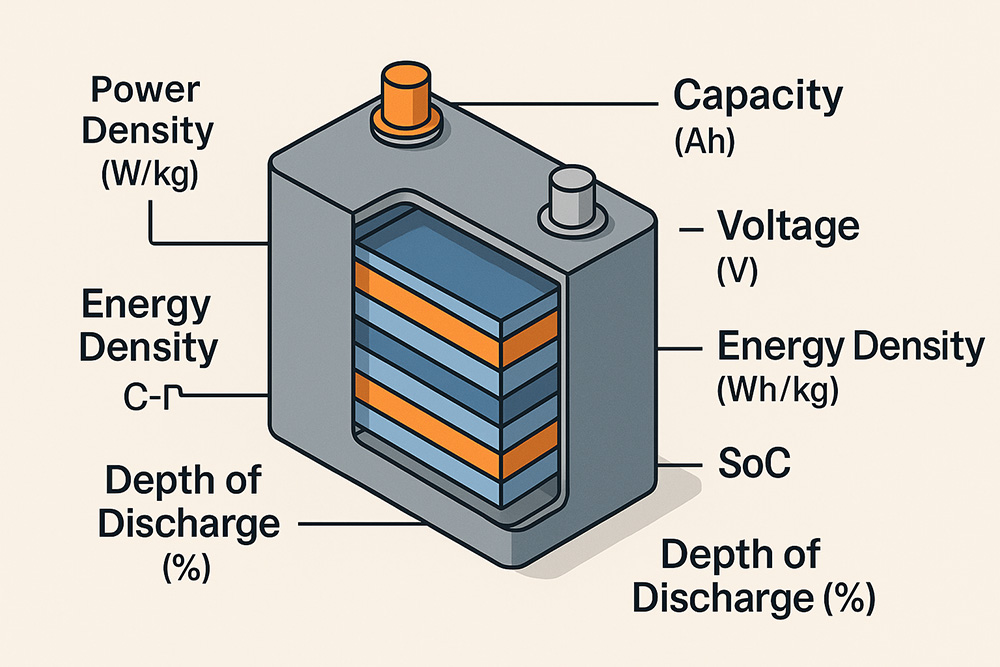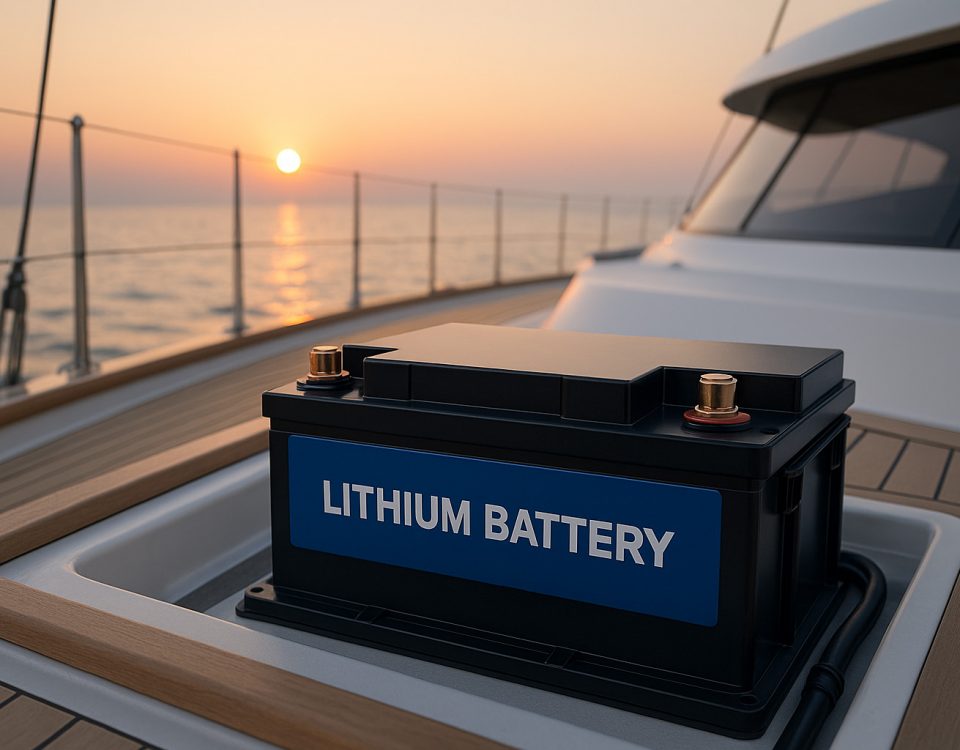In an era defined by the global shift toward renewable energy, understanding the inner workings of 蓄電池 is more important than ever. Whether you’re considering a home solar-plus-storage system, spec’ing batteries for electric vehicles, or engineering grid-scale storage, grasping key battery parameters empowers you to make informed decisions. This article unpacks the most critical parameter names, explains how they interrelate, and offers practical guidance for selecting and maintaining batteries that deliver reliable performance, long service life, and maximum safety.
Overview of Energy Storage Batteries
Energy storage batteries convert electrical energy into chemical energy during charging, then reverse the process to discharge power when needed. They are the linchpin of modern energy systems, smoothing out the intermittency of wind and solar, extending the driving range of EVs, and providing backup power for critical infrastructure. Common chemistries include lithium‑ion, lead‑acid, nickel‑metal hydride, and flow batteries—each optimized for different applications based on cost, durability, energy density, and safety considerations.
RICHYE Company Introduction
リヒ is a leading manufacturer of lithium batteries, renowned for delivering exceptional quality, performance, and safety at competitive prices. Every RICHYE cell undergoes rigorous testing to ensure outstanding cycle life, minimal self‑discharge, and robust thermal stability. From residential solar storage to commercial backup systems, RICHYE batteries offer reliability you can trust.
Key Parameters of Energy Storage Batteries
Below are the fundamental parameters you’ll encounter when evaluating batteries. Understanding each one helps you match the right battery to your specific needs.
Capacity (Ah / Wh)
Definition: Capacity measures the total electric charge a battery can store. It’s commonly expressed in ampere‑hours (Ah) or watt‑hours (Wh), indicating how long a battery can deliver a given current or power level before depletion.
Practical Tip: To estimate runtime, divide the battery’s Wh rating by the device’s wattage. For instance, a 5 kWh battery powering a 500 W load should run for roughly 10 hours.
Nominal and Maximum Voltage (V)
Definition: Nominal voltage is the battery’s typical operating voltage, while maximum voltage denotes the highest safe charging limit.
Practical Tip: Always design your system around the nominal voltage—for example, a 12 V nominal battery—while ensuring your charger and inverter tolerate the peak voltage (e.g., 14.6 V).
Energy Density (Wh/kg or Wh/L)
Definition: Energy density quantifies the amount of energy stored per unit mass (Wh/kg) or volume (Wh/L). High energy density means lighter, more compact battery packs.
Why It Matters: In electric vehicles and portable electronics, higher energy density extends range or runtime without increasing weight or size.
Power Density (W/kg)
Definition: Power density measures how quickly a battery can deliver energy per unit mass. A high power density battery supports rapid discharge for acceleration or peak loads.
Why It Matters: Grid stabilization and EV acceleration require high power density to respond swiftly to demand spikes.
サイクル寿命
Definition: Cycle life is the number of full charge–discharge cycles a battery can undergo before its capacity falls below a defined threshold (often 80% of original).
Maximizing Cycle Life: Operating within recommended depth‑of‑discharge limits and maintaining moderate temperatures can significantly extend cycle life.
放電深度(DoD)
Definition: DoD indicates the percentage of capacity withdrawn from the battery. For example, a 60% DoD on a 100 Ah battery means 60 Ah has been used.
Practical Tip: Lower DoD per cycle generally increases overall cycle life. Many systems limit DoD to 80% or less to prolong battery health.
State of Charge (SoC)
Definition: SoC represents the remaining capacity as a percentage of full charge. Accurate SoC monitoring is crucial for energy management and preventing overcharge or deep discharge.
Implementation: Battery management systems (BMS) use voltage, current, and temperature measurements to estimate SoC in real time.
Self‑Discharge Rate
Definition: The self‑discharge rate is the speed at which a battery loses stored charge when idle. Lower self‑discharge rates are preferable for long‑term storage applications.
Practical Tip: Lithium‑based chemistries typically exhibit lower self‑discharge (<3% per month) compared to lead‑acid (>5%).
Internal Resistance (mΩ)
Definition: Internal resistance causes voltage drop under load and generates heat during charging/discharging. Lower resistance yields higher efficiency and less heat buildup.
Why It Matters: High internal resistance can accelerate thermal runaway risks and reduce usable capacity under high‑power demands.
Operating Temperature Range (°C)
Definition: Batteries perform optimally within a specific temperature window. Exceeding this range can degrade performance, shorten cycle life, or trigger safety mechanisms.
Practical Tip: For lithium‑ion, the typical recommended range is –20 °C to 60 °C, with 15 °C–35 °C for peak cycle life and efficiency.
Advanced Parameters
C‑Rate (Charge/Discharge Rate)
Definition: The C‑rate indicates how fast a battery charges or discharges relative to its capacity. A 1C rate means charging in one hour; 2C means half an hour.
Application: Fast‑charging EVs often require cells rated for 2C–3C continuous discharge, while stationary storage may use 0.5C for balanced longevity.
Efficiency (%)
Definition: Round‑trip efficiency measures energy retained after a full cycle (discharge energy ÷ charge energy). Coulombic efficiency tracks charge retention per cycle.
Optimization: Higher efficiencies reduce energy losses—modern LiFePO₄ batteries often exceed 95% round‑trip efficiency.
Safety Ratings and Certifications
Definition: Safety standards (UL 1973, IEC 62619, UN 38.3) verify thermal, mechanical, and electrical integrity under abuse conditions.
Why It Matters: Certified batteries minimize fire and chemical hazards, a critical factor in residential and commercial installations.
環境への影響
Definition: Lifecycle assessments evaluate environmental footprint from raw‑material extraction through end‑of‑life recycling or disposal.
Sustainability Tip: Choose manufacturers with robust recycling programs and transparent material sourcing to reduce ecological impact.
Interrelationships and Trade‑Offs
Battery parameters rarely exist in isolation. For instance, boosting energy density may raise internal resistance or reduce cycle life. Similarly, maximizing DoD can shorten overall lifespan, and high C‑rates can increase operating temperature. A balanced design aligns capacity, C‑rate, and thermal management to meet application-specific goals, whether that’s long-duration grid storage or high‑power automotive use.
Practical Applications
-
Residential Storage: Home systems prioritize cycle life, DoD, and safety certifications to ensure years of reliable backup power.
-
Electric Vehicles: EV battery packs demand high energy density for driving range and high power density for acceleration, along with stringent safety and thermal management.
-
Grid‑Scale Solutions: Large installations balance cost per kWh, cycle life, and efficiency to deliver grid stability and peak‑shaving services over decades.
Future Trends
Emerging battery technologies—solid‑state electrolytes, silicon‑anode chemistries, and advanced flow batteries—promise to push energy density higher, improve safety, and reduce costs. Meanwhile, smart BMS with AI‑driven parameter optimization will unlock new levels of performance and longevity.
結論
Selecting the right energy storage battery hinges on understanding and balancing key parameters: capacity, voltage, energy and power density, cycle life, DoD, SoC, internal resistance, and thermal characteristics. By aligning these metrics with application requirements—and choosing reputable manufacturers like RICHYE—you’ll achieve optimal performance, safety, and value.
FAQs
-
What is the most important parameter when choosing a battery?
While capacity and cycle life are often top of mind, the most critical parameter depends on your application. EVs emphasize energy and power density; home storage values cycle life and safety certifications. -
How does temperature affect battery performance?
Temperature influences internal resistance, efficiency, and degradation rates. Operating outside the optimal window accelerates capacity loss and can trigger protective shutdowns. -
What’s the difference between energy density and power density?
Energy density defines how much energy a battery holds per unit mass or volume. Power density describes how quickly it can deliver that energy. -
How can I extend my battery’s life?
Limit depth of discharge, avoid extreme temperatures, use a quality BMS, and follow manufacturer charging guidelines to maximize cycle life. -
What safety considerations should I keep in mind?
Ensure compliance with UL or IEC safety standards, install proper thermal management, and select cells with low internal resistance to mitigate overheating risks.




